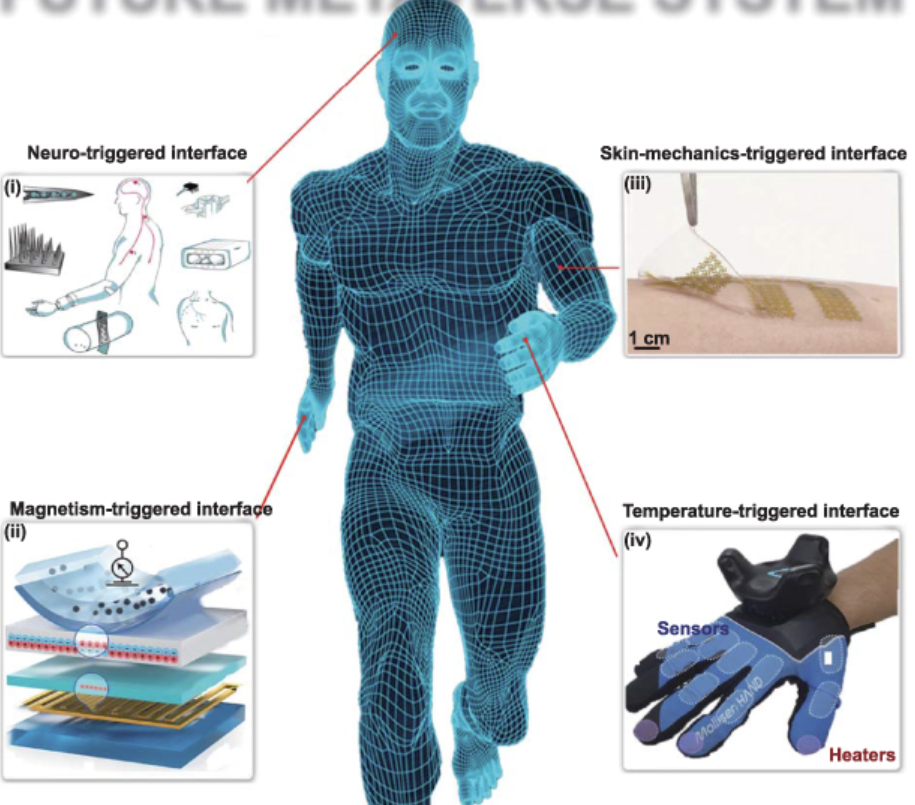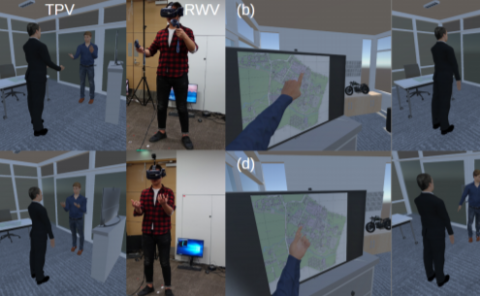Nanomaterial-based flexible sensors for metaverse and virtual reality applications
PubDate: July 2023
Teams: Changchun University of Science and Technology (CUST) and City University of Hong Kong
Writers: Jianfei Wang3,1, Jiao Suo3,2, Zhengxun Song1, Wen Jung Li4,2 and Zuobin Wang
PDF: Nanomaterial-based flexible sensors for metaverse and virtual reality applications

Abstract
Nanomaterial-based flexible sensors (NMFSs) can be tightly attached to the human skin or integrated with clothing to monitor human physiological information, provide medical data, or explore metaverse spaces. Nanomaterials have been widely incorporated into flexible sensors due to their facile processing, material compatibility, and unique properties. This review highlights the recent advancements in NMFSs involving various nanomaterial frameworks such as nanoparticles, nanowires, and nanofilms. Different triggering interaction interfaces between NMFSs and metaverse/virtual reality (VR) applications, e.g. skin-mechanics-triggered, temperature-triggered, magnetically triggered, and neural-triggered interfaces, are discussed. In the context of interfacing physical and virtual worlds, machine learning (ML) has emerged as a promising tool for processing sensor data for controlling avatars in metaverse/VR worlds, and many ML algorithms have been proposed for virtual interaction technologies. This paper discusses the advantages, disadvantages, and prospects of NMFSs in metaverse/VR applications.


